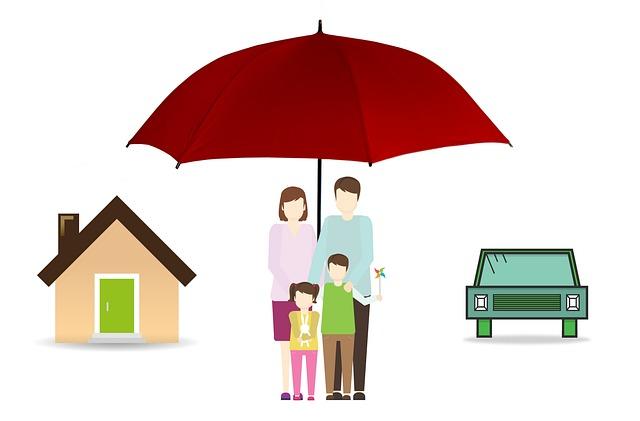Life insurance serves as a financial safety net, providing peace of mind to policyholders by ensuring that their loved ones are financially protected in the event of an untimely death. However, as individuals age, they often notice a marked increase in their life insurance premiums, prompting questions about the factors that contribute to this upward trend. This article delves into the reasons behind the age-related escalation in life insurance costs, exploring the underlying principles of risk assessment, actuarial calculations, and the economic factors at play. By understanding the dynamics of premium adjustments, individuals can make informed decisions about their life insurance needs and financial planning strategies.
Understanding the Correlation Between Age and Life Insurance Premiums
As individuals age, several factors contribute to the increase in life insurance premiums. Risk of mortality is a primary driver; insurers rely on statistical data showing that as people get older, the likelihood of health complications rises, thus elevating the risk of a payout. This statistical correlation means insurers must adjust premiums to cover potential claims adequately. Additionally, age-related health conditions such as heart disease, diabetes, and other chronic illnesses become more prevalent, leading to higher underwriting risks and consequently, higher premiums.
- Increased health risks: Aging is often accompanied by various health issues that can affect life expectancy.
- Shorter policy term: Older individuals typically have a shorter remaining lifespan, reducing the time over which premiums can be spread.
- Economic factors: As healthcare costs rise, insurers may adjust premiums to ensure they can cover future claims.
Furthermore, policy structures can also impact premiums. Many policies are designed to reflect the increasing cost of coverage as one ages, ensuring that the financial stability of the insurer is maintained. Understanding these elements can help individuals make informed decisions when purchasing life insurance, recognizing how age inevitably plays a pivotal role in premium calculations.

Factors Influencing Premium Adjustments as You Age
As individuals age, several key elements contribute to the recalibration of life insurance premiums. One primary factor is the increased risk of health issues. With advancing age, the probability of encountering medical conditions rises, prompting insurers to adjust premiums to offset potential payouts. Additionally, the shortening of life expectancy plays a significant role. Insurance companies calculate the likelihood of payout based on the anticipated lifespan, meaning that as the years pass, the risk of the policy being claimed sooner increases, resulting in higher premiums.
- Health Deterioration: Chronic illnesses and age-related health concerns become more prevalent.
- Mortality Rates: Statistical data indicates a higher probability of death as one ages, influencing premium costs.
- Policy Duration: Older applicants typically have shorter policy terms available, which can lead to increased rates.
- Lifestyle Changes: Shifts in lifestyle, such as reduced physical activity, can also impact premium adjustments.

Detailed Insights into Age-Related Risk Assessment by Insurers
When insurers evaluate life insurance applications, they meticulously analyze various age-related factors to determine the risk profile of applicants. Age plays a pivotal role in this risk assessment due to its correlation with health conditions and life expectancy. As individuals age, the likelihood of developing chronic illnesses or encountering health issues increases, thereby elevating the perceived risk for insurers. This increased risk is reflected in the premiums, which tend to rise with age. By understanding these age-related dynamics, insurers can effectively predict and manage potential claims, ensuring the sustainability of their insurance products.
- Mortality Rates: Older individuals statistically face higher mortality rates, prompting insurers to adjust premiums accordingly.
- Health Deterioration: With advancing age, the probability of health deterioration rises, increasing the risk for insurers.
- Life Expectancy: Actuarial tables show that life expectancy decreases with age, influencing premium calculations.
- Medical History: A longer medical history often means more potential health issues, which insurers consider in their risk assessment.

Recommendations for Managing Life Insurance Costs Over Time
Effectively managing life insurance costs as you age requires strategic planning and a proactive approach. One of the most crucial steps is to review your policy periodically. Life changes such as marriage, the birth of a child, or retirement can significantly alter your insurance needs. By reassessing your coverage regularly, you can ensure that your policy remains aligned with your current life circumstances and financial goals. Consider the following recommendations:
- Shop Around: Don’t hesitate to explore other insurance providers to compare rates and coverage options. Switching policies could potentially save you money.
- Consider Term Life Insurance: If you find your premiums rising steeply, switching to a term life policy might offer the coverage you need at a more affordable rate.
- Bundle Policies: Some insurers offer discounts if you bundle your life insurance with other policies, such as home or auto insurance.
- Maintain a Healthy Lifestyle: A healthier lifestyle can lead to lower premiums. Regular exercise, a balanced diet, and avoiding smoking can positively impact your insurance costs.
By incorporating these strategies, you can help mitigate the rising costs associated with aging and maintain a life insurance policy that fits your budget and needs.

